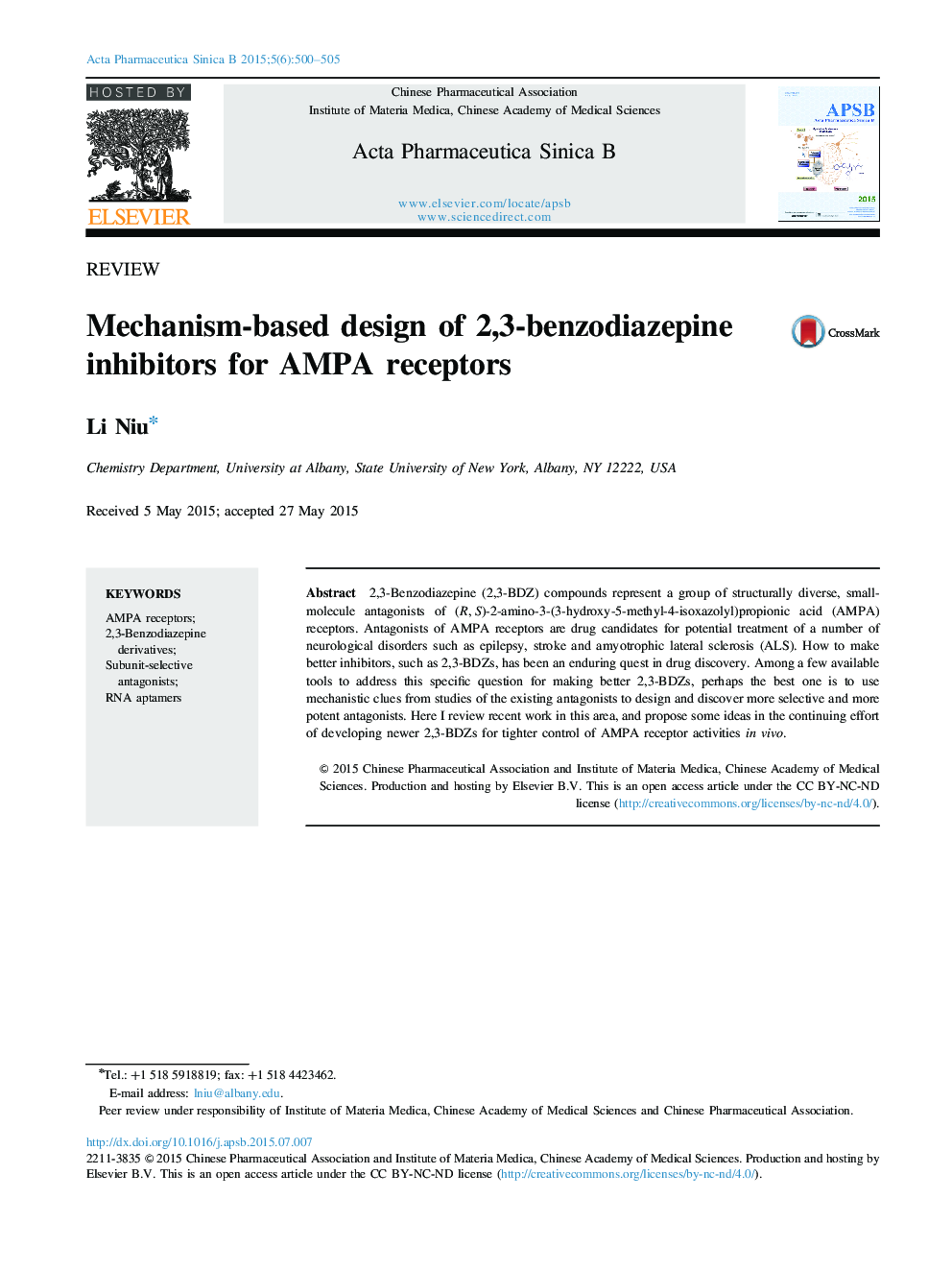| Article ID | Journal | Published Year | Pages | File Type |
|---|---|---|---|---|
| 2474501 | Acta Pharmaceutica Sinica B | 2015 | 6 Pages |
2,3-Benzodiazepine (2,3-BDZ) compounds represent a group of structurally diverse, small-molecule antagonists of (R, S)-2-amino-3-(3-hydroxy-5-methyl-4-isoxazolyl)propionic acid (AMPA) receptors. Antagonists of AMPA receptors are drug candidates for potential treatment of a number of neurological disorders such as epilepsy, stroke and amyotrophic lateral sclerosis (ALS). How to make better inhibitors, such as 2,3-BDZs, has been an enduring quest in drug discovery. Among a few available tools to address this specific question for making better 2,3-BDZs, perhaps the best one is to use mechanistic clues from studies of the existing antagonists to design and discover more selective and more potent antagonists. Here I review recent work in this area, and propose some ideas in the continuing effort of developing newer 2,3-BDZs for tighter control of AMPA receptor activities in vivo.
Graphical abstract2,3-Benzodiazepine (2,3-BDZ) compounds represent a group of structurally diverse, small-molecule antagonists of (R,S)-2-amino-3-(3-hydroxy-5-methyl-4-isoxazolyl)propionic acid (AMPA) receptors. Better antagonists of AMPA receptors, such as 2,3-BDZs, has been an enduring quest in drug discovery. This review highlighted recent work in this area, and proposed some ideas in the continuing effort of developing newer 2,3-BDZs for tighter control of AMPA receptor activities in vivo.Figure optionsDownload full-size imageDownload as PowerPoint slide
